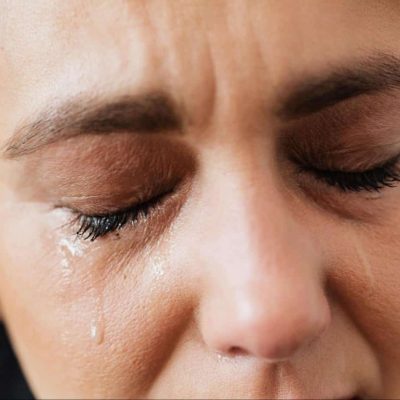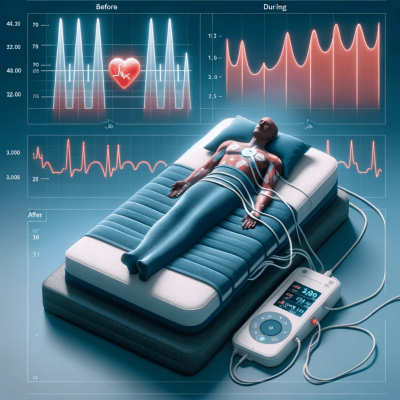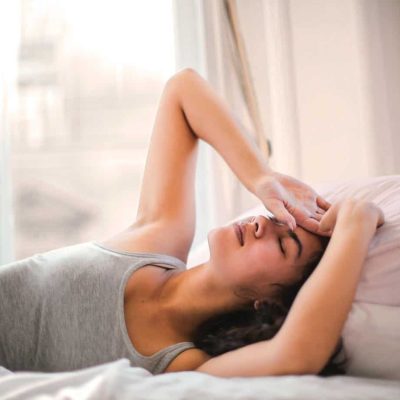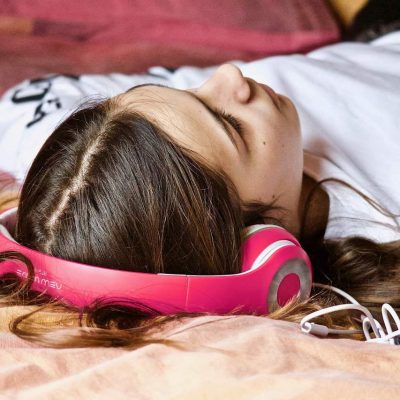Reviewed + Fact Checked by Valentina Dor, Msc Bio-Science Last updated: 11 October, 2023
Table of Contents
ToggleWhat is Sleep Apnea, and Why Is It Important to Distinguish Between the Types?
If you have pauses in your breathing while sleeping, you may have sleep apnea. Many people are unaware they have it since they have not received a diagnosis from a doctor. During sleep, this stop in breathing might range from seconds to minutes. Sleep apnea, if left untreated, can cause heart and lung difficulties, as well as fatigue and cognitive problems throughout the day.
When a person’s airway collapses, breathing gets obstructed, which can result in sleep apnea. The brain then wakes up to resume breathing and falls back asleep. Because of a shortage of oxygen, this scenario might result in lethal unfavourable responses in the body.
Depending on the severity, sleep apnea may be detected in an individual utilising several tests. It is classified into three categories, and it is critical to distinguish between them since each type corresponds to a distinct remedy.
Type 1: Obstructive Sleep Apnea: Causes, Symptoms, and Diagnosis
Are you experiencing blocked airways and disrupted sleep due to a lack of oxygen? Then maybe you need to consult your doctor right away because you might be experiencing obstructive sleep apnea.

When something is obstructing the flow of air into your airways, it results in obstructive sleep apnea (OSA). This means that you cannot get enough oxygen during the night, which disrupts your sleep. When you have OSA, you may snore loudly and wake up with a dry mouth or a headache. You might also feel tired during the day because your body isn’t getting enough oxygen.
Risk Factors
When it comes to obstructive sleep apnea, you may experience symptoms like loud snoring, gasping for air, choking sensations, daytime fatigue, memory problems, difficulty in concentrating, high blood pressure, and other serious health conditions due to a lack of oxygen and frequently experiencing disturbed sleep.
Moreover, men are more susceptible to OSA since they are statistically more affected by obesity and have larger necks and throats than women. You also need to note that men and women who are over 40 are most likely to have it since they are also affected by other conditions like high blood pressure and heart disease.
Having OSA may also correlate with the person’s family history. If your family members have OSA, you may also have a greater chance of developing it over time.
Diagnosis and Medical Tests for Obstructive Sleep Apnea
Frequent episodes of full or partial upper airway blockage while a person is asleep are a defining feature of the sleep disorder known as obstructive sleep apnea (OSA). OSA results in fragmented sleep, changes in cardiovascular health, and even unexpected death. These conditions include hypertension, heart failure, arrhythmias, atrial fibrillation, and stroke.
Based on your symptoms, your doctor will probably make the diagnosis of OSA, but he may also inquire about your past medical conditions and do a physical examination. If he or she believes a different illness might be the source of your symptoms, he can advise that you get more tests. But the more common type of diagnosis is through polysomnography.
A polysomnography test, as we have described above, is performed in a sleep clinic by a qualified technician who monitors various physiological parameters such as oxygen saturation, heart rate, and respiratory movements during sleep for a minimum period of at least 4 hours, but usually overnight. This type of sleep test can also measure the brain waves and airway resistance in the person’s body.
Type 2: Central Sleep Apnea: Causes, Symptoms, and Diagnosis
Central sleep apnea occurs when the brain temporarily ceases communicating with the muscles used for breathing. This causes breathing to stop for brief periods during sleep. Since it affects the central nervous system instead of the muscles responsible for normal breathing, this condition is also known as “brainstem” sleep apnea.
This type of apnea may run in families, but it often develops later in life and affects both men and women equally. It’s most common among overweight people with enlarged tonsils or adenoids, but it can also occur if someone has an injury or tumour on his or her brainstem or neck area. You may also experience breathing irregularities while you are awake at any time of the day.
CSA targets people over 60 because the brainstem is already weak. Due to shallow breathing and longer periods of not having enough oxygen, people experiencing CSA are more susceptible to heart problems and stroke.
Risk FactorsSleep Apnea
People who experience CSA may have the tendency to stop breathing for at least 10 seconds or longer and then start breathing again. Central sleep apnea often happens when people have other health problems that affect their brain or nervous system, such as stroke, head injury, brain tumour, Parkinson’s disease, or dementia.
CSA can occur in anyone with a problem with the nervous system or brain function. Other risk factors for CSA include:
Age
As you age, your throat muscles can begin to weaken and lose tone, which makes it easier for them to collapse during sleep and obstruct your breathing. Additionally, the age of a person affects their brain activity in general since the brain is weakened due to old age. You must still be mindful because any age group can be affected by CSA.
Heart Disorders
A heart condition that prevents adequate blood flow to the brain and other organs while you sleep may be the cause of central sleep apnea. This condition is called cardiopulmonary insufficiency. Because of this, many people who have heart disorders also suffer from CSA. Oxygen deprivation may be fatal and can lead to more serious situations.
Stroke History
CSA is more common in people with neurological conditions such as stroke or problems with their heart rhythm. People who have strokes already have something wrong with their brain activity, which is why they are also susceptible to CSA.
Specific Medications
Your chance of getting it may increase if you take certain medicines. These include drugs used to treat depression, anxiety, and other psychiatric disorders. The side effects of these medications can also contribute to developing sleep apnea.
Diagnosis and Medical Tests for Central Sleep Apnea
When the brain is unable to send signals to the muscles responsible for breathing, this can be because you have central sleep apnea. A professional can do many diagnostic tests to help you determine which type of sleep apnea you have. This may include:
Nocturnal Polysomnography (NPSG)
A test called a nocturnal polysomnogram (PSG) can be used to identify sleep disorders. This exam involves monitoring your muscle tone, eye movement, and brain activity while you sleep. It can also record oxygen saturation and any other statistics of your body.
A neurologist or another doctor who focuses on sleep disorders then examines these recordings. Your doctor may be able to diagnose a disorder like sleep apnea using the test’s results. The exam can also be used to evaluate how well a treatment for sleep problems is working.
Arterial Blood Gas Test
Arterial blood gas (ABG) testing is used to measure the level of oxygen in your blood as well as the amount of carbon dioxide and other gasses present in your body tissue. It’s used by doctors to determine how well your lungs are working, whether you have a breathing problem, or if your body is retaining too much fluid.
Many doctors make use of arterial blood gas tests to identify patients who are suffering from sleep apnea or other breathing disorders. This test can also be helpful in determining whether a patient is at risk of developing heart failure or other cardiovascular problems.
Pulse Oximetry
Pulse oximetry is a painless way to measure blood oxygen levels. The device works by shining light through your skin and measuring how much light your blood absorbs. These measurements are then used to calculate the amount of oxygen in your bloodstream, which is helpful in determining if you have sleep apnea.
Type 3: Complex Sleep Apnea Syndrome: Causes, Symptoms, and Diagnosis
Complex sleep apnea causes the airway to close off while you sleep. There could be a 40-second breathing pause as a result of this. Blood oxygen levels fall and carbon dioxide levels rise during this time. A rapid awakening or brief loss of consciousness may occur when the brain is not receiving enough oxygen. These breathing pauses frequently occur several times per hour.
Complex sleep apnea syndrome is different from simple sleep apnea because it has underlying conditions that make it more difficult to treat. This condition combines both OSA and CSA into one category. It usually results from damage or trauma to structures in the head and neck region that control breathing during sleep.
If you have symptoms of complex sleep apnea syndrome, such as snoring and daytime tiredness, see your doctor right away. Your doctor will ask about your symptoms and conduct tests to determine whether you have OSAS or CSA, both of which are treatable with treatment interventions that may include lifestyle changes.
Risk Factors for Complex Sleep Apnea Syndrome
A person with complex sleep apnea stops breathing many times each night—sometimes hundreds of times per hour. This means that their brain doesn’t get enough oxygen-rich blood, and they will wake up repeatedly throughout the night feeling tired and unable to function normally during the day. They may have trouble concentrating and remembering things from one day to another because they are so tired all the time from a lack of good quality, restful sleep at night.
Treating complex sleep apnea syndrome is much more difficult because you are both dealing with OSA and CSA. That is why the risk is also doubled. Due to this, people who have undergone continuous positive airway pressure therapy but are still insufficient may experience more risks.
Diagnosis and Medical Tests for Complex Sleep Apnea Syndrome
Doctors diagnose complex sleep apnea syndrome by performing several tests on patients with suspected cases of OSA. Some of the tests that can be done are:
Polysomnography
You could get a polysomnogram to check for breathing issues while you sleep. For this test, you must spend the night in a hospital while having wires attached to your body to track your heartbeat, blood pressure, breathing patterns, brain activity, eye movements, blood oxygen levels, and blood flow.
In some cases, you may need an imaging test such as an MRI or CT scan to determine if there’s any structural abnormality in the upper airways or your brain that could be causing CSA.
Titration tests
Titration tests are used to confirm that CPAP (continuous positive airway pressure) works for you. They involve gradually increasing the pressure of your machine over several nights until you are using the highest possible setting without any leaks or discomfort from your mask or tubing. Through the information provided by this test, the doctor will most likely know what type of treatment will work best for you.
Split-night study
A split-night study involves two days of staying in a sleeping center, which involves diagnostic and treatment portions to help you deal with your sleep apnea. This test may be recommended if you’re having trouble completing a full night’s sleep due to obstructive or central sleep apnea, or both. In these cases, additional information about your condition should be required before a doctor can determine if CPAP therapy is appropriate for you.
Treatment Options: Methods to Manage and Alleviate the Symptoms of Sleep Apnea
It is usually safe to assume that you are suffering from sleep apnea if you experience excessive daytime sleepiness, snoring, and loud breathing during your sleep. If you find yourself waking up several times per night because of shortness of breath and choking, then it is likely that you have sleep apnea. However, you need to be diagnosed by a doctor so that you can ensure that you don’t have any other underlying illnesses.
Sleep apnea can be managed with the help of the following methods depending on your treatment plan:
CPAP Therapy
A continuous positive airway pressure (CPAP) device helps treat sleep apnea by providing constant air pressure through a mask worn over the nose while you sleep. The goal is to keep your throat relaxed and open so you can breathe normally through your nose and mouth.
Sleep Apnea Surgery
Sleep apnea surgery is a procedure that’s used to treat obstructive sleep apnea (OSA). This condition causes your upper airway to collapse when you’re asleep, cutting off your air supply.
Lifestyle Changes
When it comes to treating sleep apnea, changing your lifestyle will definitely help you treat your condition. Having a good lifestyle will prevent you from becoming obese, which is one of the main causes of sleep apnea today.
Dental Devices
One type of CPAP machine used to treat sleep apnea is a dental device. Oral appliances, or mouthpieces, are other names for dental equipment. Dental appliances keep the airway open as you sleep by holding the lower jaw forward.
Conclusion: Seeking Professional Help and Taking Action Are Keys to Managing Sleep Apnea Effectively
When you have sleep apnea, you have to seek professional help right away because if you don’t, it can cause a more fatal condition. You may develop heart conditions and other complications when you don’t manage your sleep apnea. Additionally, professional help will give you the better treatments that you need to improve your condition in a righteous and just way. Always remember that sleep apnea is not a small thing that you should sleep on. It needs urgent treatment from any professional available near you.
References
- https://www.mayoclinic.org/diseases-conditions/sleep-apnea/symptoms-causes/syc-20377631
- https://my.clevelandclinic.org/health/diseases/8718-sleep-apnea
- https://www.mayoclinic.org/diseases-conditions/central-sleep-apnea/symptoms-causes/syc-20352109
- https://www.webmd.com/sleep-disorders/sleep-apnea/central-sleep-a




